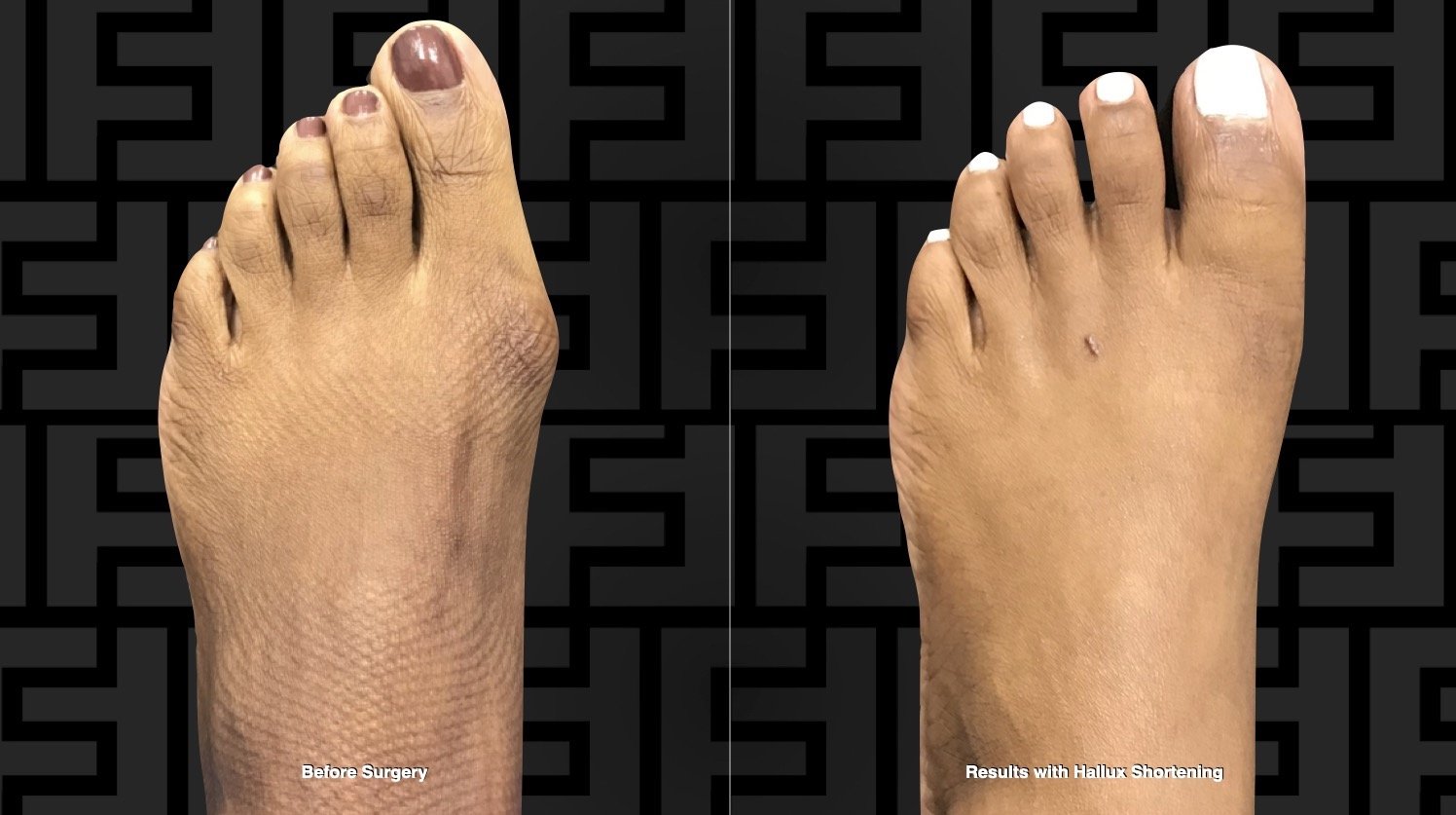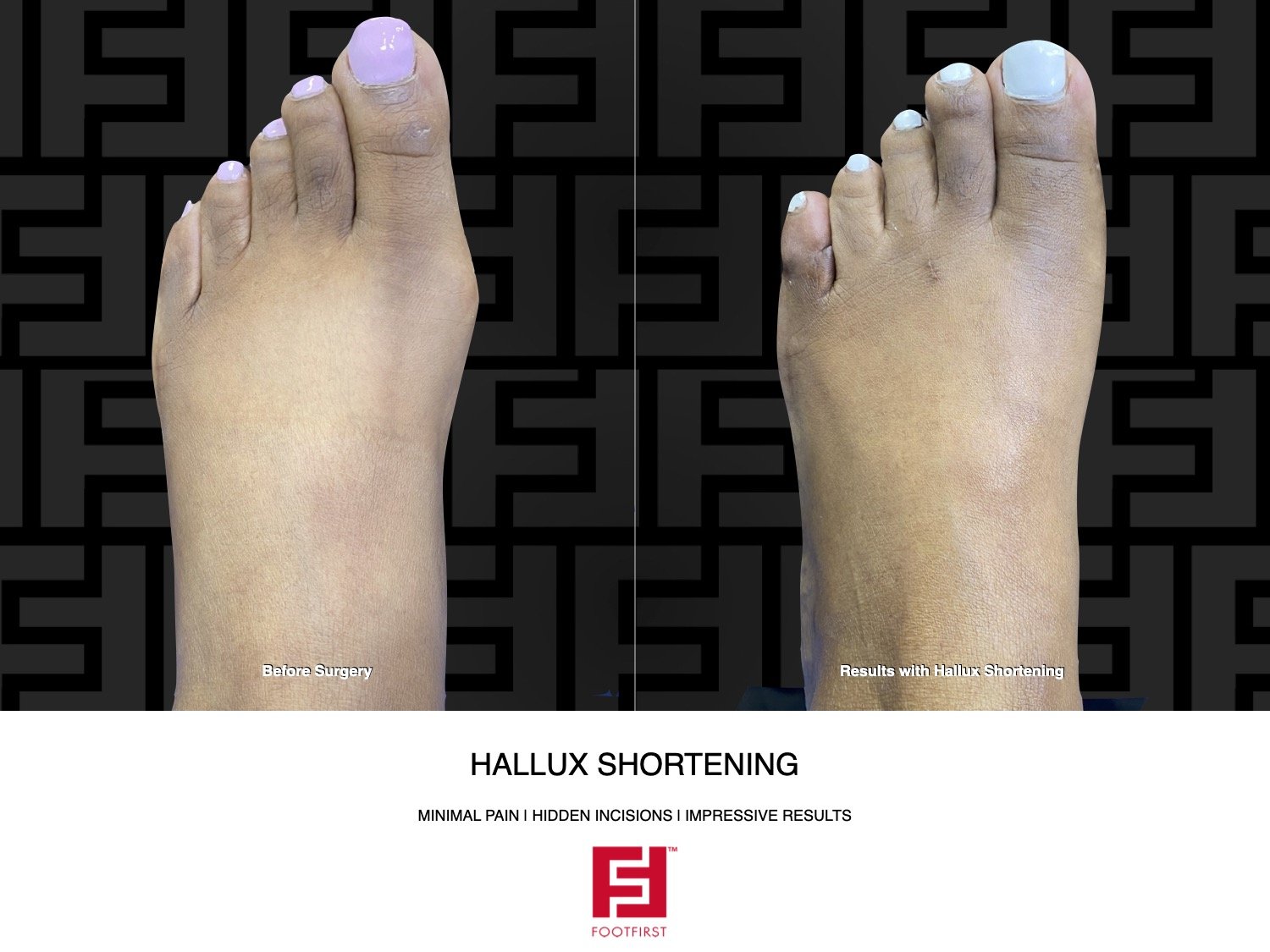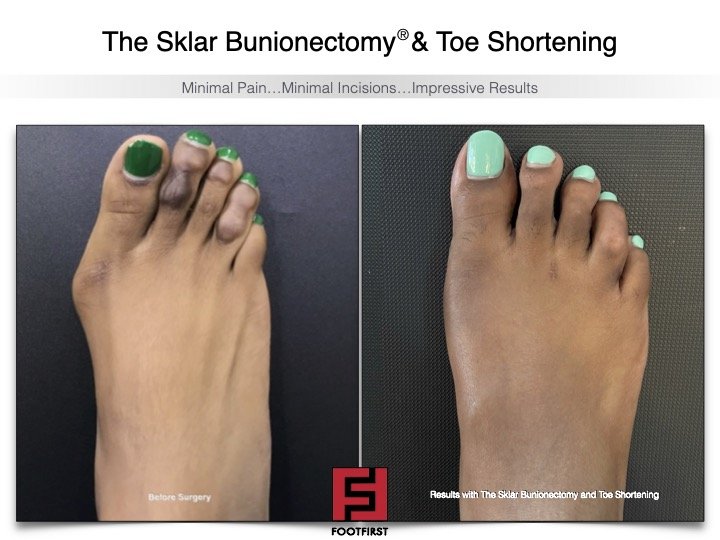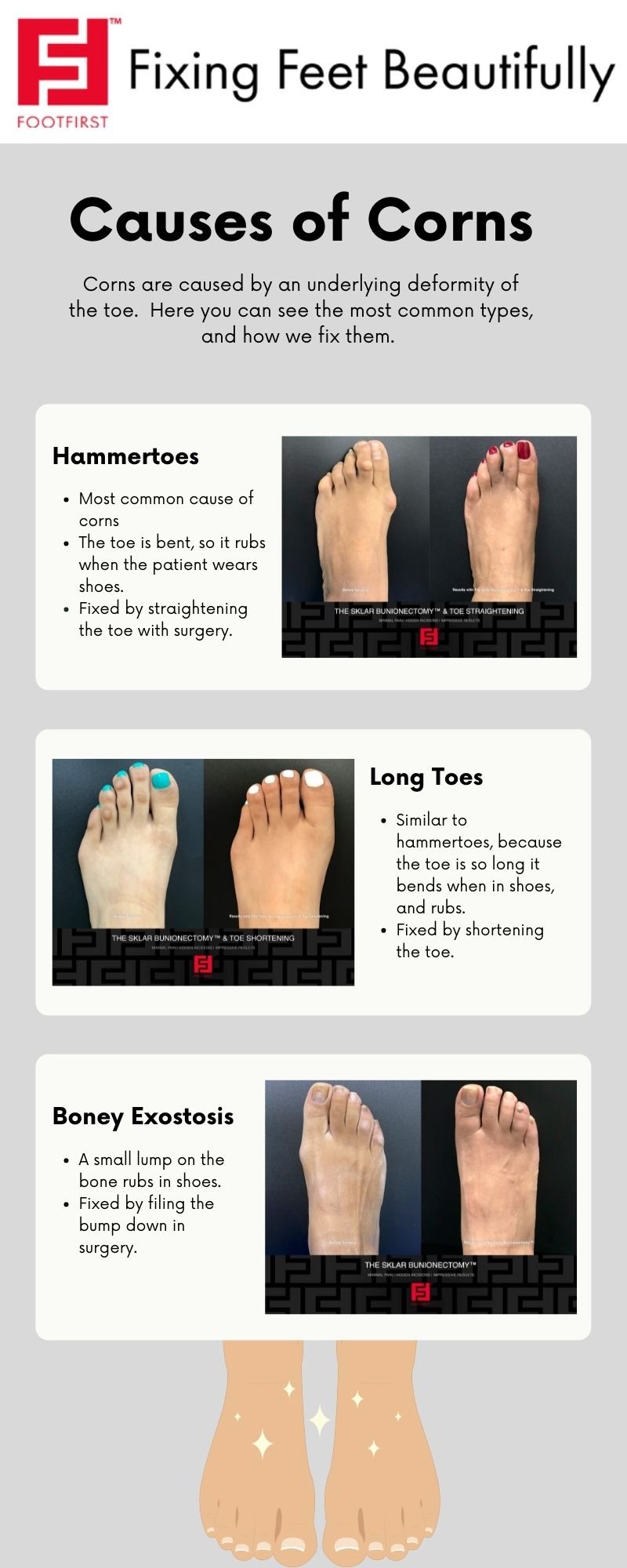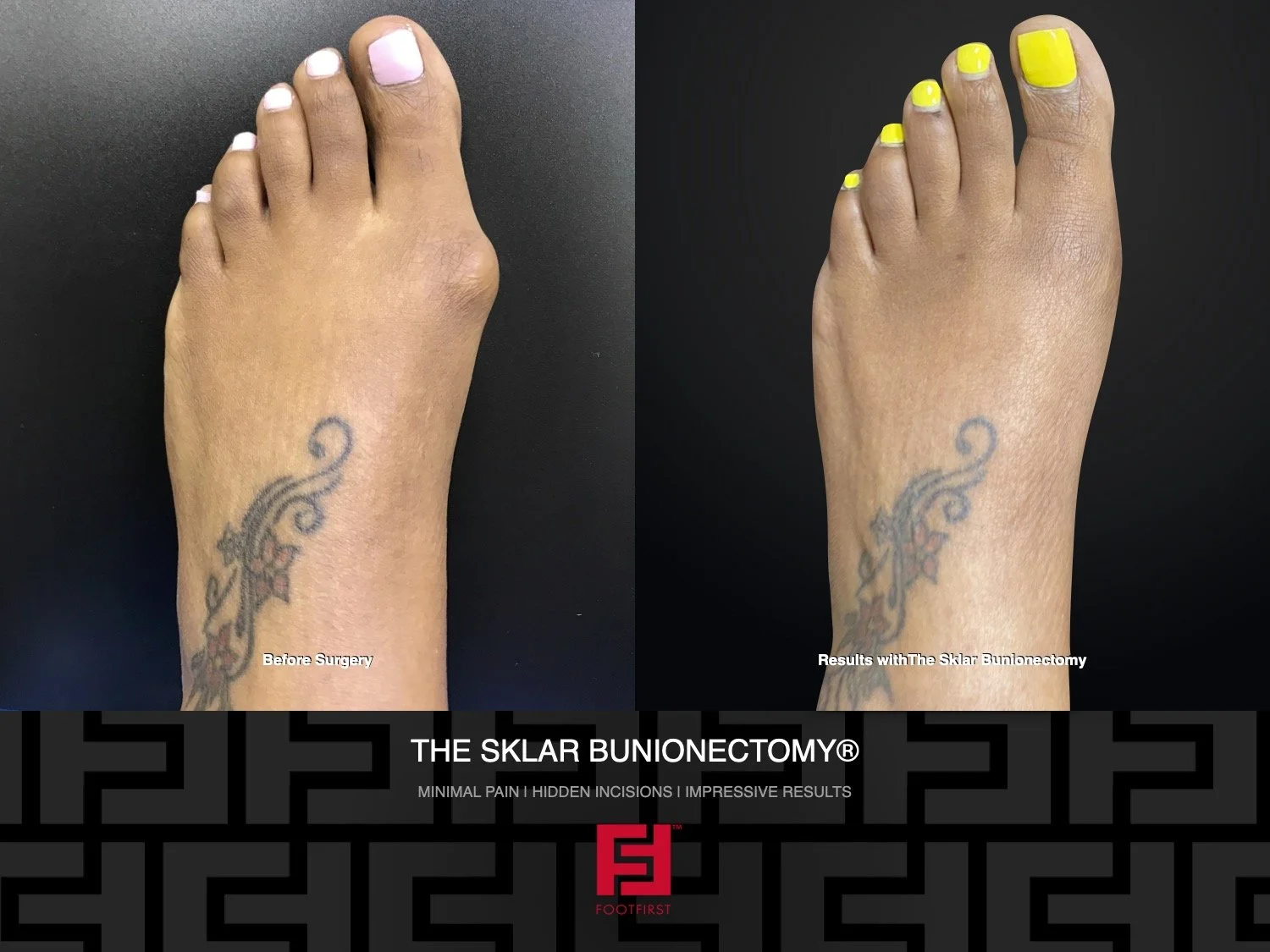Pre-Operative Photos | www.footfirst.com
Can you walk us through the surgical patient experience at Foot First Podiatry?
The surgical patient will first start with a consultation followed by a pre-operative appointment. Here you can see two views of this patient’s pre-operative photos. This patient was very insecure about their bunion deformity as well as their long, crooked toes making it difficult to wear certain shoes and never wanting to show off their feet at the beach or in any sandals.
Immediate Post-Operative | www.footfirst.com
So after the pre-operative appointment, the patient then goes to surgery?
Yes, here you can see the patient’s immediate post-operative photo. We performed our Sklar Bunionectomy and toe shortening and straightening procedures. You’ll notice there are no visible incisions. However, things are not beautiful yet. We tell all our patient’s to expect 4 months of ugliness, because the foot will bruise and swell at first. This patient was able to bear weight immediately in a surgical shoe with a limited walking restriction.
3 weeks Post-Operative | www.footfirst.com
What does that healing look like?
Well, here you can see her healing at 3 weeks. At this point, all her stitches were removed and she is cleared to return to a gym shoe approved by our office. She will continue limited walking. Her scabbing, bruising and swelling again are normal and expected at this visit.
1 year Post-Operative | www.footfirst.com
When should patients expect their final result?
Most patients will see full results within a year. Here is the before and after photo of that same patient about a year out from surgery, with no visible scars, showing off her new foot in a cute sandal.
If you would like a consultation, please use the contact us form on our website or contact the office at 847-352-9221.






